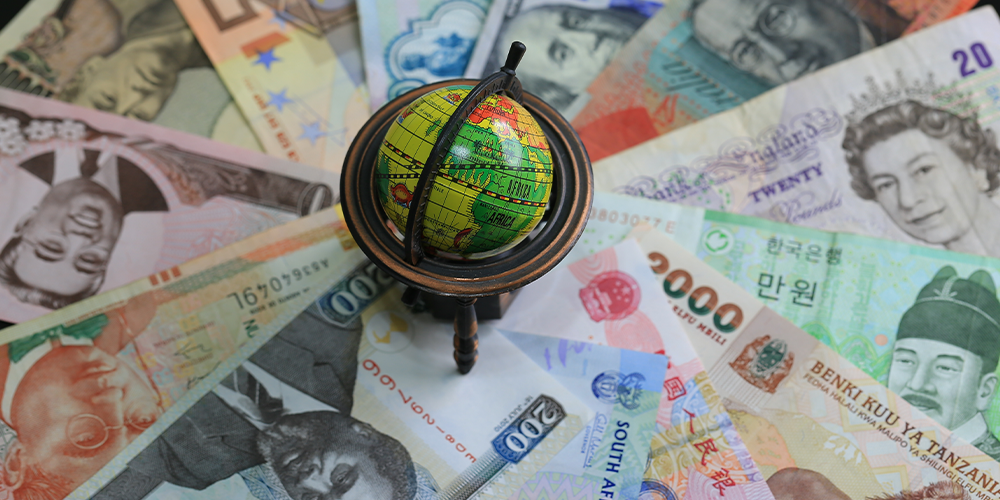There is rare universal agreement: the global economic outlook for 2023 is bad. Global growth will be low, even perhaps recessionary, and average inflation and unemployment high. But just how bad will it be? The answer isn’t clear. One might have hoped questions permeating the post-pandemic outlook would recede. But that does not appear to be the case for 2023, even apart from geopolitics. Answers remain few and far between. Markets and policy-makers face huge challenges.
In the US, all eyes are on prices and labour markets, and what they portend for Federal Reserve policy.
Headline inflation has peaked, declining to 7.1% year-on-year in November from 9.1% y-o-y in June. Many analysts – emboldened by favourable October and November consumer price index readings — expect significant further declines in headline prices given lower energy and goods prices, easing supply chain woes and cooling demand. But others flag the risk that the core personal consumption expenditures price index (5%) will be stickier on the downside – even than the latest dot plot — due to service price increases, higher wages and shelter costs.
Labour markets are cooling, but underlying conditions remain firm with unemployment at 3.7%, below its natural rate. Some argue that declining economic activity will bring vacancies down while avoiding surging unemployment. Others cite labour market strength and labour supply constraints due to the great resignation, asserting that an ‘immaculate disinflation’ is implausible. They believe a surge in unemployment beyond 5% will be needed to cool core inflation; recent wage data, pointing to 5% annual gains, reinforce that base case.
Given largesse in recent years, a divided Congress and with 2024’s presidential elections already in sight, fiscal policy should remain neutral in 2023.
That leaves the Fed as the main game in town. Many market analysts project a Fed Funds terminal rate just under or around 5% and don’t rule out the possibility of 2023 rate cuts. But others think the Fed Funds rate may need to go much higher, alongside unemployment, if the Fed takes its 2% target seriously. In their view, the Fed can’t be happy with the recent easing in financial conditions, nor will it want to risk reducing restrictiveness too soon. Many further assert the Fed will keep the funds rate higher for longer, at its peak through 2023, raising stagflation risks. Quantitative tightening will run in the background, adding to the restrictiveness, and may generate its own surprises.
How these questions are answered will shape the course of monetary policy as well as US and global markets for 2023. There is little reason to believe that the Fed knows the answers.
Chinese growth is widely seen as picking up in 2023, perhaps from a lockdown depressed 3% in 2022, towards 4.5%-5%. Inflation remains restrained. Nonetheless, large question marks dominate. Its Covid zero policy appears to be in the rear-view mirror with the government pivoting rapidly, in the wake of recent widespread protests, to reopening. Some believe reopening will significantly spur activity. But as reopening entails a spike in Covid cases, deaths may soon be on the rise, with a stretched health system. These developments on top of ongoing woes – anaemic productivity, housing, demographics, excess leverage and more – may limit upside consumption and growth gains. Further, it is unclear how much countercyclical support the government will provide, though it’s likely to be modest.
The euro area faces recession in 2023, but how shallow or deep this will be remains a puzzle. Manufacturing and service purchasing managers’ indexes are below 50. Germany is hard hit. But Europe has secured energy supplies to get through the current winter. A mild winter would benefit the continent’s outlook. However, given surging average energy prices, headline inflation around 10% and with core at 5%, the European Central Bank is rapidly raising rates and starting QT. Significant hikes are occurring despite few signs of a wage/price spiral; Europe’s inflation being supply-side driven, which monetary policy cannot address; and few signs inflation expectations are de-anchored. Influenced by hawkish commentary, markets are pricing in substantial further increases. But is it realistic to expect the ECB to carry this through amid a recession – especially if it is deep? And British experience in the autumn reminds any governments planning unfunded fiscal profligacy to support growth in 2023 that they should be wary of raising funding costs and assigning a risk premium to their sovereign assets and currency.
Japan muddles along well. Most forecasters project 1% growth or higher. But inflation has finally temporarily perked up on the back of higher energy costs and a weaker yen. The Bank of Japan remains highly accommodative – the hallmark of the Kuroda era. But Japan’s pre-Christmas JBG band widening will be a precursor to further 2023 post-Kuroda monetary policy ‘normalisation’.
The economies above account for some 60% of global gross domestic product. Others in the emerging market space also face difficult questions, in part due to the global influences of high inflation, monetary policy tightening and, in some cases, high debt burdens.
The extent of uncertainties facing the 2023 outlook may not be as great as in 2021/2022, yet they remain enormous. While policy-makers may talk a good game, they don’t know the answers to the many open questions. Market volatility and an unpredictable policy environment are likely to predominate next year.
Mark Sobel is US Chair of OMFIF.
